Occupational safety training for surfboard manufacturing.
99,000 ₫
Note: The above price is calculated per person and may vary depending on the number of participants in the course and market fluctuations. For more accurate pricing information, please refer to the pricing table or contact our consulting staff directly.
Occupational safety is an important issue in surfboard manufacturing factories and must be addressed promptly to ensure the health and safety of workers, as well as to enhance the reputation of businesses. The Occupational Safety Training course is one of the effective solutions to raise awareness on how to prevent workplace accidents for workers involved in surfboard production.
Table of Contents
Toggle1. Overview of Surfboards
a. What is a Surfboard?
A surfboard is a sporting equipment used in surfing, a water sport and recreational activity. Below is a detailed look at surfboards:
Structure of a Surfboard
- Deck: The top part of the board, where the surfer stands or lies when preparing to surf.
- Nose: The front tip of the board, which can be pointed or rounded, helping the board cut through waves.
- Tail: The back end of the board, which can have various shapes such as square, rounded, or fish tail, affecting how the board rides and turns.
- Fins: Attached underneath the board, helping it maintain direction and stability when surfing waves.
- Wax: Applied on the deck to provide grip for the surfer and prevent slipping.
Types of Surfboards
- Longboard: Longer and wider, suitable for beginners or those who prefer smooth and graceful surfing.
- Shortboard: Shorter and lighter, suitable for experienced surfers wanting to perform advanced maneuvers.
- Fish: Has a fish-shaped tail, short and wide, ideal for small to medium waves.
- Funboard: A hybrid between longboard and shortboard, easy to control and suitable for all skill levels.
- Gun: Long and narrow, designed for riding big and powerful waves.
Materials
Surfboards are commonly made from:
- Foam: Lightweight and buoyant, often coated with fiberglass for durability.
- Epoxy: Lighter and more durable than fiberglass, usually more expensive.
- Wood: Traditional and highly durable, but heavier than modern materials.
History
Surfing originated in ancient Hawaii and Polynesia, where it was an important part of culture and religion. Early surfboards were made from solid wood. Over time, materials and manufacturing techniques improved, creating various types of boards suitable for different wave conditions and surfing styles.
Surfing Techniques
- Paddle: Using hands to paddle out to the waves.
- Pop-up: The motion of standing up from a lying position on the board.
- Bottom Turn: Turning the board at the bottom of the wave to start moving along the wave face.
- Cutback: Turning the board back toward the wave to maintain speed and position.
- Tube Ride: Riding inside the hollow part of a wave, one of the most difficult and beautiful maneuvers.
Benefits of Surfing
- Physical: Improves muscle strength, endurance, and balance.
- Mental: Reduces stress, enhances feelings of happiness and relaxation.
- Connection to Nature: Increases the bond with nature and the ocean.
A surfboard is not only a sporting equipment but also a symbol of freedom and connection to the sea. With a rich history and continuous development, surfing and surfboards continue to attract millions of people worldwide.

b. Types of Machinery Used in Surfboard Production
1. CNC Cutting Machine (Computer Numerical Control)
- Function: CNC machines are programmed to cut and shape foam blocks precisely according to 3D designs.
- Advantages: Creates complex shapes with high accuracy and saves time compared to manual methods.
2. Sanding Machine
- Function: Sands the surface of the board to smooth it and prepare for the next steps.
- Advantages: Ensures an even and smooth surface, helping fiberglass or epoxy coatings adhere well.
3. Fiberglass Spraying Machine
- Function: Sprays fiberglass layers on the board surface to increase strength and water resistance.
- Advantages: Creates an even and smooth coating, enhancing durability.
4. Epoxy/Polyester Resin Spraying Machine
- Function: Sprays epoxy or polyester resin onto the board to create a hard, durable, and waterproof coating.
- Advantages: Ensures even coating without bubbles, making the board durable and water-resistant.
5. Vacuum Bagging Machine
- Function: Compresses fiberglass and resin layers on the board surface, removing air and creating a solid bond.
- Advantages: Reduces air bubbles and improves adhesion between material layers.
6. Drilling Machine
- Function: Drills holes for attaching fins and other accessories.
- Advantages: Ensures high precision and accurate positioning.
7. Laser Cutting Machine
- Function: Cuts and engraves small or complex details on the board, such as logos or decorative elements.
- Advantages: High precision and ability to create intricate patterns.
8. Foam Cutting Machine
- Function: Cuts foam blocks into basic shapes before further processing.
- Advantages: Fast and accurate, saving time and material.
9. 3D Scanning Machine
- Function: Scans and measures the board to ensure size and shape match the design.
- Advantages: Helps quality control and detects defects before finishing.
10. Drying Machine
- Function: Dries resin and fiberglass layers after application.
- Advantages: Reduces drying time and ensures coating quality.

c. Famous Surfboard Manufacturers
Channel Islands Surfboards
- Founded: 1969
- Founder: Al Merrick
- Features: Known for innovative designs and high quality. Collaborates with many professional surfers to develop models.
- Popular Products: The Flyer, The Pod, The Neck Beard.
Lost Surfboards
- Founded: 1980
- Founder: Matt Biolos
- Features: Known for diverse and creative designs, often partnering with top athletes.
- Popular Products: The Rocket, The Puddle Jumper, The V3.
Firewire Surfboards
- Founded: 2005
- Founder: Nev Hyman
- Features: Focuses on advanced technology and sustainability, using eco-friendly materials and innovative manufacturing.
- Popular Products: The Dominator, The Seaside, The Helium.
JS Industries
- Founded: 1999
- Founder: Jason Stevenson
- Features: Australian brand famous for high-performance boards designed for professional surfers.
- Popular Products: The Monsta Box, The Blak Box, The Forget Me Not.
Haydenshapes
- Founded: 1997
- Founder: Hayden Cox
- Features: Known for modern designs and advanced technology. Uses FutureFlex technology to create light and strong boards.
- Popular Products: The Hypto Krypto, The Holy Grail, The Plunder.
DHD Surfboards
- Founded: 1984
- Founder: Darren Handley
- Features: One of Australia’s famous brands, known for quality and performance boards.
- Popular Products: The DX1, The Sweet Spot, The 3DV.
Rusty Surfboards
- Founded: 1985
- Founder: Rusty Preisendorfer
- Features: A long-established brand known for diverse and creative designs.
- Popular Products: The Dwart, The Heckler, The Smoothie.
Surftech
- Founded: 1989
- Founder: Randy French
- Features: Specializes in durable and lightweight boards using vacuum bagging and composite materials.
- Popular Products: The Tuflite, The Softop, The Air-E.
Pyzel Surfboards
- Founded: 1998
- Founder: Jon Pyzel
- Features: Known for high-performance boards used by many professional athletes.
- Popular Products: The Ghost, The Phantom, The Gremlin.
Takayama Surfboards
- Founded: No specific founding year available
- Founder: Donald Takayama
- Features: Famous for longboards and mid-length boards, with a traditional style and high quality.
- Popular Products: The In the Pink, The DT-2, The Scorpion.

d. Specific Jobs in a Surfboard Manufacturing Factory
Group 1
- Executive Director, Deputy Executive Director, Department Heads in the surfboard manufacturing factory.
Group 2
- Safety Officers: manage safety in the factory, design safety procedures, supervise and enforce staff compliance with safe working processes.
Group 3
- Foam Cutting Workers: Operate CNC machines to cut foam blocks into basic board shapes according to design.
- Sanding Workers: Sand board surfaces to achieve necessary smoothness before applying fiberglass and resin.
- Fiberglass Spraying Workers: Spray or apply fiberglass layers on the board surface to increase durability.
- Resin Coating Workers: Spray or pour epoxy or polyester resin on the board to create a hard, waterproof coating.
- Vacuum Bagging Workers: Use vacuum bagging machines to compress material layers on the board, removing air and bubbles.
- Finishing Sanding Workers: Re-sand the board surface after coating has dried to achieve a perfect smooth finish.
- Drilling Workers: Drill holes for fin installation and other accessories.
- Assembly Workers: Install fins, leashes, and other accessories as required.
- Quality Control Staff (QC): Inspect surfboards at various stages to ensure no technical defects and products meet quality standards.
- 3D Measurement Staff: Use 3D scanning machines to check board dimensions and shapes for design compliance.
- Drying Workers: Operate drying machines to dry resin and fiberglass layers.
- Finishing Workers: Final inspection and finishing touches such as polishing surfaces, applying logos, and packaging products.
Group 4
- Office work, service, sales, marketing.
- Production management, quality management, human resource management, materials management, financial and accounting management.
- Research and development of new products, product design, and packaging design.
2. Overview of Labor Safety Training Course for Surfboard Production
In this article, we focus on issues related to Group 3 because Group 3 is the group directly involved in the production process and faces the highest labor safety risks. For other groups, please refer here.
a. What is Group 3 labor safety training?
- Group 3 labor safety training consists of sessions equipping workers with awareness on how to prevent occupational accidents.
- The safety training course helps workers recognize and avoid hazards, thereby reducing the risks of occupational accidents during work.
REGISTER FOR LABOR SAFETY TRAINING SERVICE
b. Training Duration
Initial Safety Training Duration
- The total training time is at least 24 hours, including testing time.
- 8 hours of theory on policies, laws on labor safety and hygiene
- 8 hours of theory on basic knowledge of labor safety and hygiene
- 4 hours of theory on specialized training content
- 2 hours of practical training on specialized content
- 2 hours of theoretical test at the end of the training course
The safety training center will arrange the training into multiple sessions depending on the work schedule of employees. Typically, there are 6 training sessions over 3 days, provided the manufacturing company arranges continuous study time.
Periodic Safety Training Duration
- Before the labor safety card expires, workers who want to renew it must undergo a periodic labor safety training course, with training time at least 50% of the initial safety training duration.
Explanation: The total periodic labor safety training time is at least 12 hours, including testing time. After completing the periodic training course and passing the test, workers will be reissued and extended their labor safety card.
c. Training Course Content
| No. | TRAINING CONTENT | TRAINING DURATION (HOURS) | |||
| Total | Including | ||||
| Theory | Practice | Test | |||
| I | System of policies and laws on labor safety and hygiene | 8 | 8 | 0 | 0 |
| 1 | Overview of the system of legal normative documents on labor safety and hygiene. | 6 | 6 | ||
| 2 | System of standards and technical regulations on labor safety and hygiene. | 1 | 1 | ||
| 3 | Specific regulations of state management agencies on labor safety and hygiene when constructing new, expanding, or renovating facilities for manufacturing, using, preserving, storing, and inspecting machinery, equipment, materials, and substances with strict safety and hygiene requirements. | 1 | 1 | ||
| II | Basic knowledge about labor safety and hygiene | 8 | 8 | 0 | 0 |
| 1 | Basic knowledge about hazardous and harmful factors at the workplace. | 4 | 4 | ||
| 2 | Methods to improve working conditions. | 1 | 1 | ||
| 3 | Safety culture in production and business. | 1 | 1 | ||
| 4 | Rights and obligations of employers and employees; policies and regimes on labor safety and hygiene for employees; functions and duties of safety and hygiene network members. | 1 | 1 | ||
| 5 | Labor safety and hygiene regulations, safety signs and directions, use of safety equipment and personal protective equipment; accident first aid skills and occupational disease prevention. | 1 | 1 | ||
| III | Specialized training content | 6 | 4 | 2 | 0 |
| Comprehensive knowledge about machines, equipment, substances generating hazardous and harmful factors; analysis, assessment, and risk management of labor safety and hygiene; safe working procedures with machines, equipment, and substances with strict safety and hygiene requirements. | 6 | 4 | 2 | ||
| IV | Final safety training test | 2 | 2 | 0 | 0 |
| Total | 24 | 22 | 2 | ||
See more training contents of the 6 groups
d. Labor Safety Card
After completing the labor safety training course and passing the test, workers will be issued a labor safety card (commonly called Group 3 labor safety certificate).
The Group 3 safety card clearly shows information such as full name, date of birth, job, and specific work environment. It also includes training time, a red stamp, and a signature confirming course completion.
According to the regulations on card issuance stated in clause 2 of Article 24, Decree 44/2016/ND-CP, there are two cases:
- If the employer and employee have a labor contract, the employer must sign, stamp, and endorse the safety card for Group 3 workers after they complete the training course from a labor safety training unit and pass the test.
- If the worker is freelance or temporary, without a labor contract, the training unit must sign, stamp, and endorse the safety card after the worker completes the labor safety training course and passes the test.

3. Identifying Hazards Affecting Workers in Surfboard Production
Chemical Hazards
- Epoxy and Polyester Resins: These resins can irritate skin, eyes, and respiratory system. Inhaling fumes may cause dizziness and nausea.
- Fiberglass: Fiberglass can cause irritation to skin, eyes, and respiratory system upon contact.
Mechanical Hazards
- CNC Cutting Machines and Drills: Risk of cuts or injuries when using machinery.
- Sanding Machines: May cause skin injuries and inhalation of sanding dust.
Dust and Powder Hazards
- Foam and Fiberglass Dust: Inhaling dust can cause respiratory and lung problems.
- Plastic Dust: Inhaling plastic dust can cause respiratory irritation and long-term health issues.
Fire and Explosion Hazards
- Epoxy and Polyester Resins: Flammable if exposed to fire or high temperature.
- Solvents and Chemicals: Some solvents and chemicals used in production may be flammable or explosive.
Noise Hazards
- Machinery: Noise from cutting machines, sanding machines, and other equipment can cause hearing damage.
Ergonomic Hazards (Working Posture)
- Poor Working Posture: Working in uncomfortable or repetitive postures can cause musculoskeletal problems.
Electrical Hazards
- Electrical Equipment: Risk of electric shock when using electrical machines and devices.

4. Safety Measures When Participating in Surfboard Production
Use of Personal Protective Equipment (PPE)
- Masks: To protect against dust and chemical fumes. N95 masks or dust masks are good choices for dusty environments.
- Gloves: Cut-resistant or protective gloves to safeguard hands from sharp objects and chemicals.
- Safety Glasses: To protect eyes from dust, debris, and chemicals.
- Protective Clothing: To protect the body from physical and chemical hazards.
- Noise-Canceling Earplugs: To protect hearing in noisy environments.
Ensure Good Ventilation Systems
- Ventilation System: Ensure the workspace has good ventilation to reduce exposure to dust and chemical fumes.
- Dust Extractor Fans: Use dust extraction fans to minimize airborne and surface dust.
Safety Training
- Chemical Training: Train workers on safe use and handling of chemicals, including epoxy resin, polyester, and fiberglass.
- Machinery Training: Provide training on safe operation and maintenance of machines and equipment.
- Fire Prevention Training: Train workers on fire prevention measures and use of fire extinguishers.
Machine Inspection and Maintenance
- Regular Inspections: Ensure all machines and equipment are inspected regularly to maintain safety and efficiency.
- Maintenance: Perform timely maintenance and repairs to avoid hazards.
Chemical Management
- Chemical Storage: Store chemicals in dry, well-ventilated places away from fire or heat sources.
- Proper Usage: Follow manufacturer instructions when using chemicals and keep containers tightly closed.
Ensure Electrical Safety
- Electrical Inspection: Regularly check electrical systems to prevent leakage or electric shock risks.
- Use Protective Devices: Use electrical protective devices such as residual current devices (RCD) to prevent electric shock.
Organize Work Area
- Cleaning and Organizing: Keep work areas clean and tidy to reduce slip, trip, and fall hazards.
- Safe Space: Ensure walkways and work areas are free of obstacles and easily accessible.
Risk Assessment and Evaluation
- Risk Assessment: Regularly perform risk assessments to identify and manage potential hazards in production processes.
- Process Updates: Update safety procedures based on risk assessments and employee feedback.
Provide Protective and Safety Equipment
- Rescue Equipment: Ensure availability of rescue and emergency equipment, including first aid kits and fire extinguishers.
- Safety Documentation: Provide clear and easy-to-understand safety signs and materials in the work area.
Health Management
- Periodic Health Checks: Conduct regular health checks for workers to detect health issues related to their jobs early.
- Encourage Rest: Encourage workers to do stretching exercises and take regular breaks to reduce fatigue and stress.
5. Benefits of Occupational Safety Training for Surfboard Production
An Toan Nam Viet offers your company the following excellent benefits upon completing occupational safety training courses in accordance with the regulations of Decree 44/2016/ND-CP on Occupational Safety and Hygiene. For companies, factories, and enterprises:
- Workers can identify potential occupational accident hazards and take preventive measures to avoid accidents.
- Your company can establish risk prevention measures in production, operation, and maintenance processes.
- Reduce costs related to safety risks in the workplace.
- Uninterrupted production process helps increase labor productivity and product quality.
- Compliance with labor safety laws to avoid legal risks.
- Create prestige and professionalism in all aspects, thereby enhancing your company’s brand.
Nam Viet’s training courses are a solution to prevent and combat external factors affecting individuals so they can avoid dangers that may lead to injuries or, worse, death.
REGISTER FOR OCCUPATIONAL SAFETY TRAINING SERVICE
6. Customer Feedback After Completing Surfboard Production Safety Training
An Toan Nam Viet has many years of experience accompanying numerous businesses across Vietnam in general and southern provinces in particular. This responsibility is extremely precious to Nam Viet, which is why our Occupational Safety Training is increasingly professional. The motivation for An Toan Nam Viet’s strong growth to date comes from positive feedback and constructive suggestions from enterprises. Below are testimonials from our valued partners we have served.
Bac Nam E&C Investment Construction Joint Stock Company
“My first time using An Toan Nam Viet’s service, I was pleasantly surprised by the 24/7 enthusiastic support from the consulting team. The class organization was quick and convenient for our company, thank you very much!”
Hoa Đat Construction and Trading Joint Stock Company
“Nam Viet’s service has greatly helped us simplify occupational safety and complete safety documentation for our work process. The consulting team was enthusiastic and timely in answering our questions. Five stars for Nam Viet.”
See more customer interviews after using An Toan Nam Viet’s services
7. Occupational Safety Training Capacity of An Toan Nam Viet
An Toan Nam Viet is a reputable and high-quality occupational safety training center in Vietnam today. Training sessions are continuously held at factories, production workshops, or construction sites nationwide (63 provinces across Vietnam).
REGISTER FOR OCCUPATIONAL SAFETY TRAINING SERVICE
Occupational Safety Training License
- An Toan Nam Viet has been inspected and granted a certificate of eligibility for occupational safety and hygiene training by the Department of Safety under the Ministry of Labor – Invalids and Social Affairs. This further strengthens our capacity in occupational safety training.

Materials and Lectures
- Before being used in occupational safety training courses, materials are reviewed and approved to ensure accuracy and effectiveness.
- Our instructors’ teaching methods are standardized according to An Toan Nam Viet’s training criteria, developed by experts in occupational safety and hygiene training to maximize knowledge retention for trainees.
Facilities
- Controlling environmental factors in classrooms improves teaching performance and knowledge absorption.
- Our training facilities provide spacious classrooms that meet standards for size, lighting, training equipment, and more.
8. Nationwide Reputable Quality Safety Training Center
At An Toan Nam Viet, we always prioritize our professional dedication to occupational safety training. For us, imparting self-protection knowledge to workers so they are equipped with safety skills on their livelihood journey is contributing to nation-building.
To ensure effective training, we meticulously prepare every detail, from tools, teaching aids, equipment, curriculum, materials, sound, and lighting.
Our occupational safety instructors are experts with many years of experience. They even have research work identifying hazards in various industries and how to prevent them.
Lectures are compiled from practical experience and delivered in an engaging, easy-to-understand way for workers. These factors help learners feel comfortable and absorb the training content well. Of course, the content closely follows Decree 44/2016/ND-CP.
Thus, workers learn many hazard prevention methods and how to protect themselves, applying them appropriately in real work situations.
Our training center is proud to provide reputable and professional occupational safety training services with the following advantages:
- Competitive training costs while maintaining training quality.
- Flexible training schedules aligned with company production demands.
- Fast and legally compliant certification procedures.
- Instructors with many years of professional experience.
- Classrooms controlled for factors that enhance teaching efficiency and learner absorption.
- Lectures tailored to occupational safety work in enterprises.
- An Toan Nam Viet works dedicatedly and professionally to support customers accurately and promptly.

9. Additional References for Surfboard Production Occupational Safety Training Materials
- Surfboard Production Occupational Safety Materials
- Occupational Safety Training Document Set
- Occupational Safety Training Test Set
- Surfboard Production Occupational Safety Curriculum
- Surfboard Production Occupational Safety Multiple-Choice Test
No comments yet


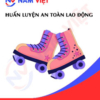
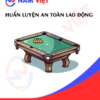



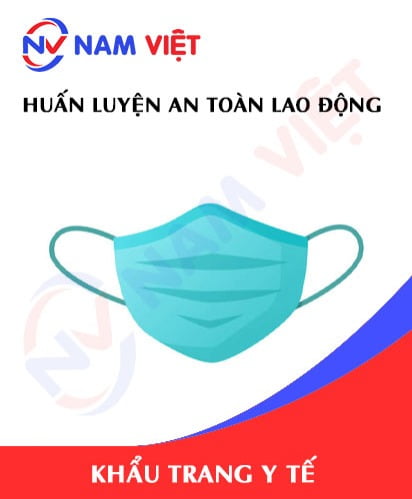

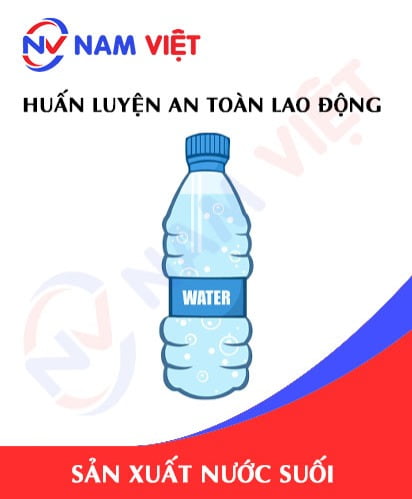

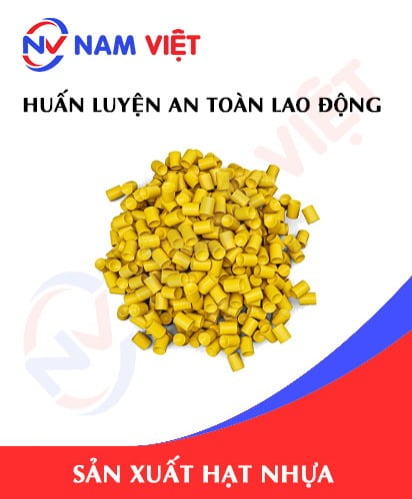
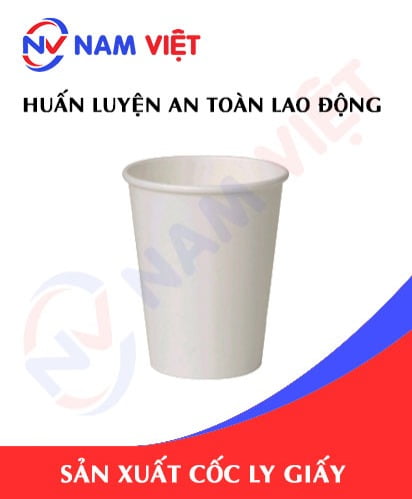
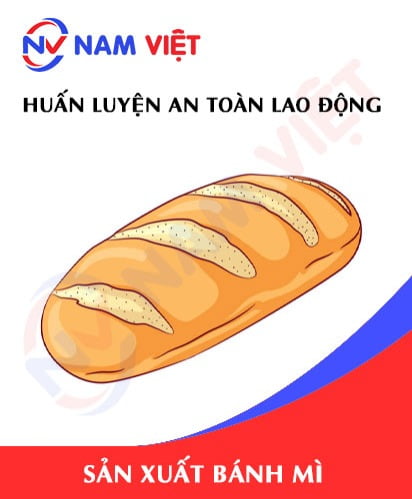

Review Occupational safety training for surfboard manufacturing.
There are no reviews yet.